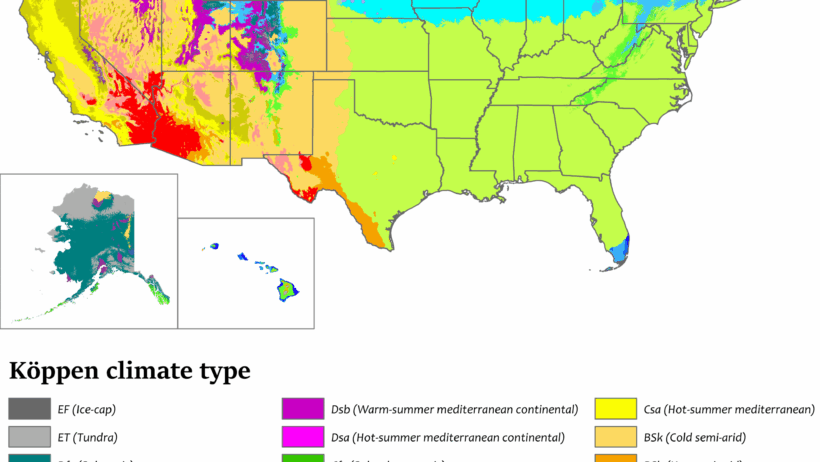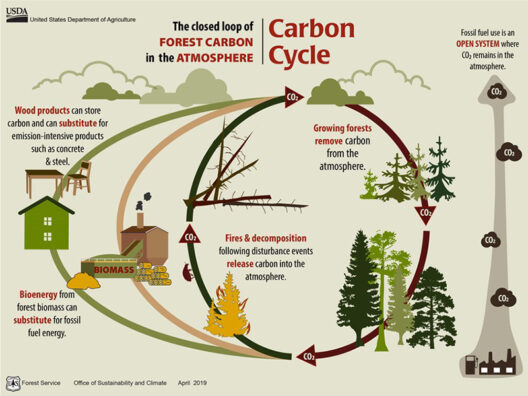The climate of the United States is a mosaic of diverse zones and dynamic weather patterns, reflecting the nation’s vast geography. Spanning over 3.8 million square miles, the climatic conditions range from arctic conditions in Alaska to the subtropical climate of Florida along the southeastern coast. This diversity is largely influenced by factors such as latitude, altitude, and proximity to oceans, which all play critical roles in shaping the climate of different regions.
At the broadest level, the United States can be divided into several predominant climate zones, as characterized by the Köppen climate classification system. Each of these zones exhibits distinct temperature and precipitation patterns, contributing to the rich tapestry of ecosystems across the country. Understanding these zones is imperative for grasping how climate impacts not only the natural environment but also agricultural practices, urban development, and even social dynamics within the country.
1. Arctic and Subarctic Climates
In the northernmost regions, particularly parts of Alaska, arctic and subarctic climates prevail. Here, the climate is defined by long, frigid winters and short, cool summers. This climate zone experiences significant snowfall and ice cover during winter months, with temperatures often plunging well below freezing. The vegetative cover is sparse, dominated by tundra ecosystems that are adapted to extreme cold and short growing seasons.
2. Continental Climates
Moving southward into the interior, the continental climate emerges, characterized by its more extreme temperature variations between summer and winter. The Great Plains, stretching from Texas to Canada, showcase this climate. Here, residents experience sweltering summers, where temperatures can exceed 100°F, juxtaposed against harsh, bitterly cold winters. The precipitation in these areas is heavily influenced by atmospheric patterns, leading to severe weather phenomena like thunderstorms and tornadoes, particularly during the spring and summer.
3. Mediterranean Climates
The Mediterranean region, primarily located along the California coast, enjoys a climate marked by dry, warm summers and wet, mild winters. This zone is perfect for agriculture, specifically for the cultivation of fruits, vegetables, and wines. The temperate climate draws tourists year-round, contributing to the economy while also showcasing the biodiversity of habitats that thrive under such conditions.
4. Humid Subtropical Climates
The southeastern United States is dominated by humid subtropical climates, which are characterized by hot, humid summers and mild, wet winters. States like Florida and the Carolinas exemplify this climate type, where the moist air currents from the Gulf of Mexico contribute to high humidity and seasonal thunderstorms. This climate supports lush vegetation, including extensive forests and wetlands, and is also the breeding ground for tropical storms and hurricanes, particularly during the summer and fall months.
5. Marine West Coast Climates
In contrast, the Pacific Northwest experiences a marine west coast climate featuring mild temperatures and abundant moisture throughout the year. Areas like Washington and Oregon enjoy cooler summers due to the moderating effects of the Pacific Ocean, fostering dense forests of coniferous trees. The rainy season occurs mainly in winter, feeding into numerous rivers and creating a rich, biodiverse environment.
6. Desert Climates
The southwestern United States hosts arid desert climates, typified by scorching summer temperatures and minimal precipitation. Regions such as Arizona and parts of Nevada showcase landscapes dominated by cacti and drought-resistant flora. While the days are sweltering, nights can be surprisingly cool due to the lack of humidity. This climate presents challenges for water resources, shaping both human settlement patterns and biodiversity within these ecosystems.
7. Tropical Climates
Finally, the southernmost parts of Florida experience a tropical climate, marked by consistently warm temperatures and high humidity year-round. This region is prone to heavy rainfall, particularly in the summer, resulting in lush vegetation and unique ecosystems like the Everglades. The threat of hurricanes also looms large, with the warm waters of the Atlantic Ocean fueling storms that can be devastating to coastal communities.
The Effects of Climate Change
While the diversity of the U.S. climate zones is fascinating, it is essential to acknowledge the burgeoning influence of climate change on these systems. Alterations in temperature, precipitation patterns, and the increased frequency and intensity of extreme weather events are indicative of a changing climate. Coastal areas face rising sea levels that threaten habitats and human settlements. In the West, prolonged droughts have heightened wildfire risks, affecting air quality and biodiversity. Additionally, the agricultural sectors are in a state of flux as farmers grapple with shifting planting seasons and altered crop viability.
Conclusion
The climate of the United States is a complex interplay of various climatic zones, each contributing to the nation’s ecological richness and social dynamics. Understanding these diverse climates is paramount for addressing the challenges posed by climate change and developing sustainable practices that honor the land and its inhabitants. As the consequences of climate change become increasingly pronounced, it is essential to advocate for policies that foster resilience and sustainability across all climatic zones, ensuring a balanced coexistence with the natural environment.







